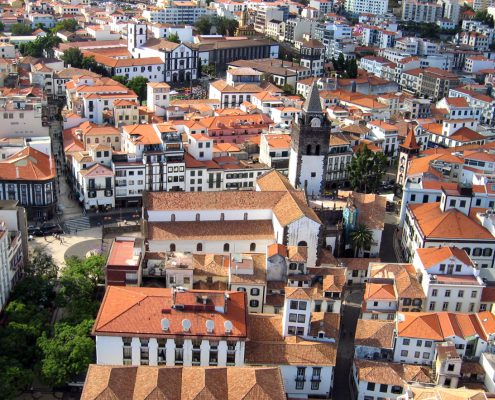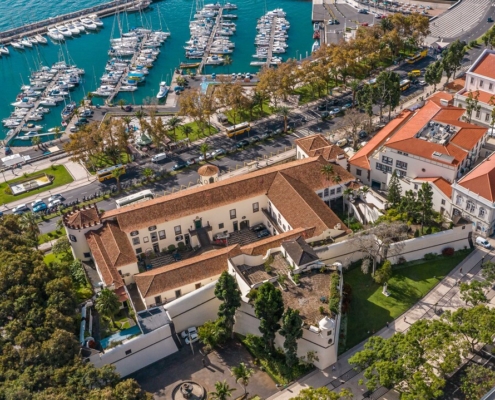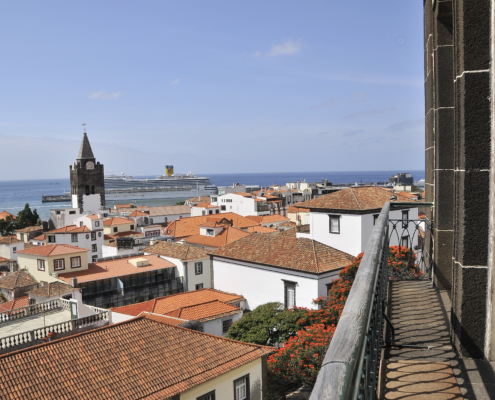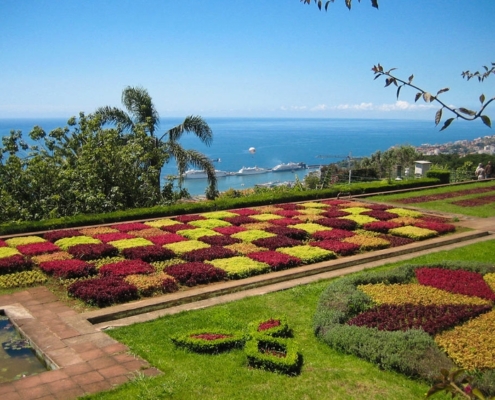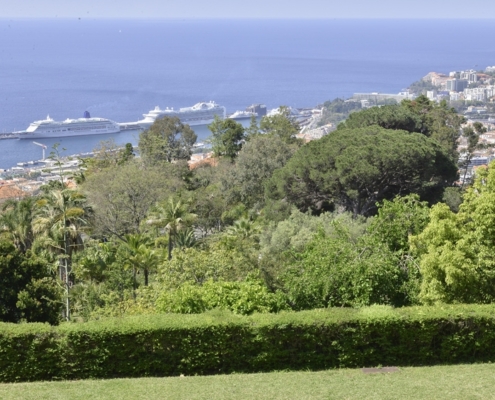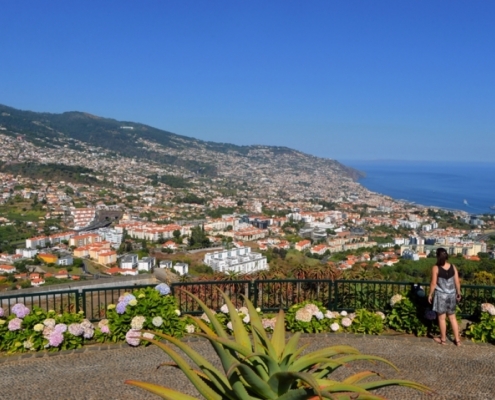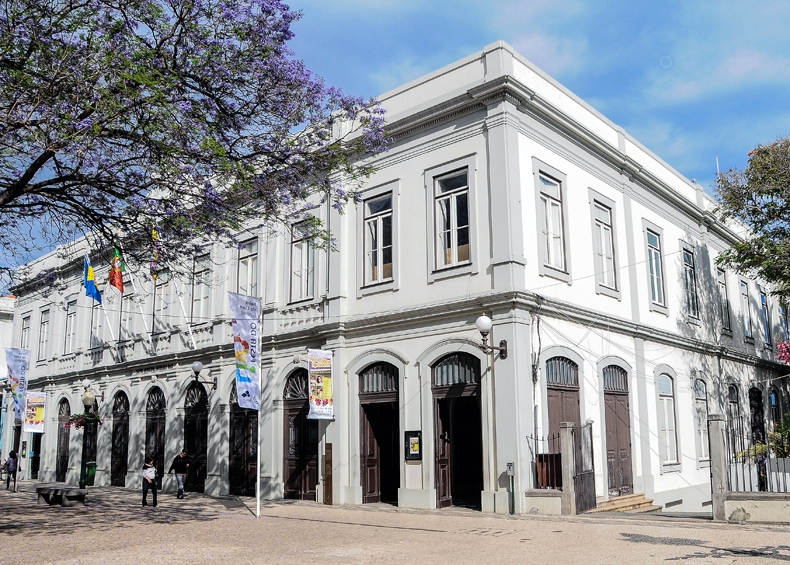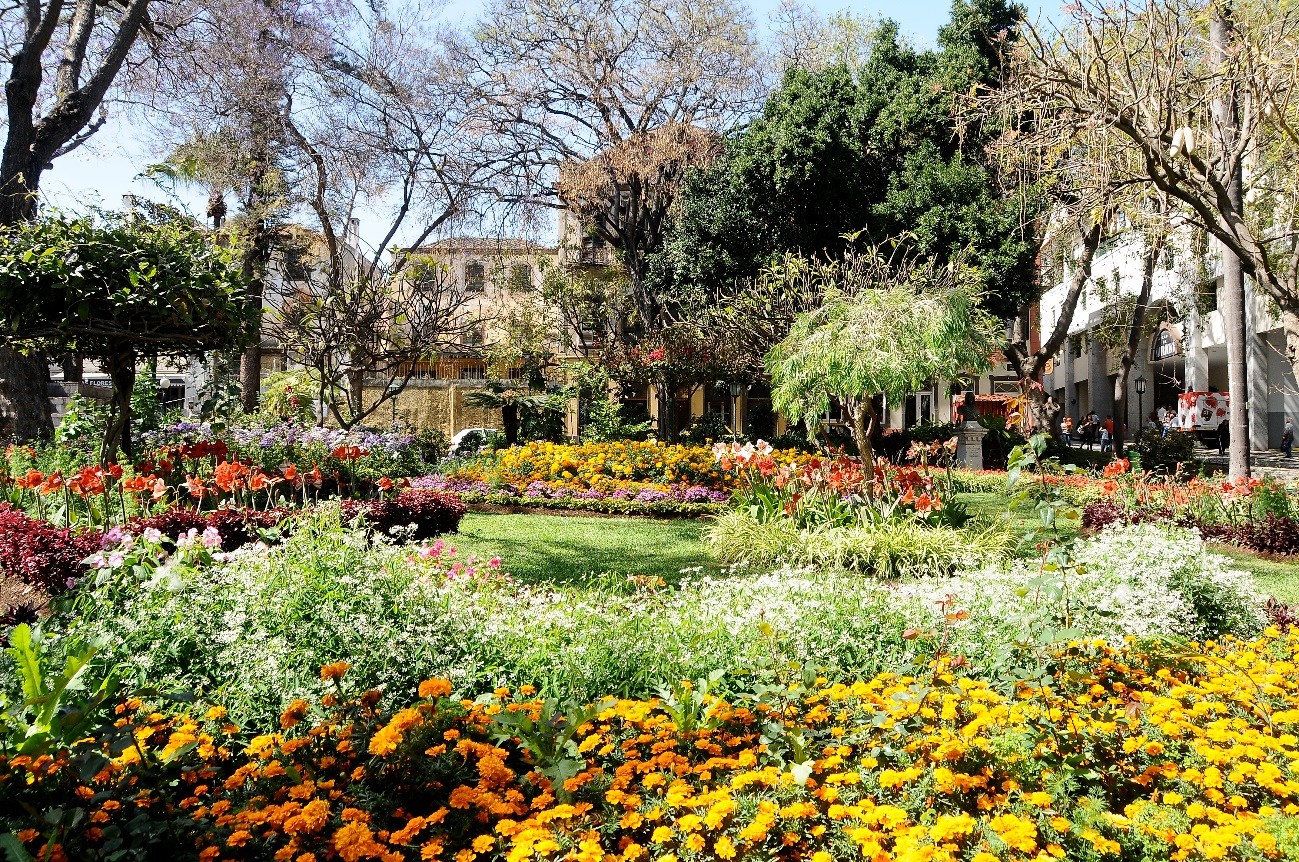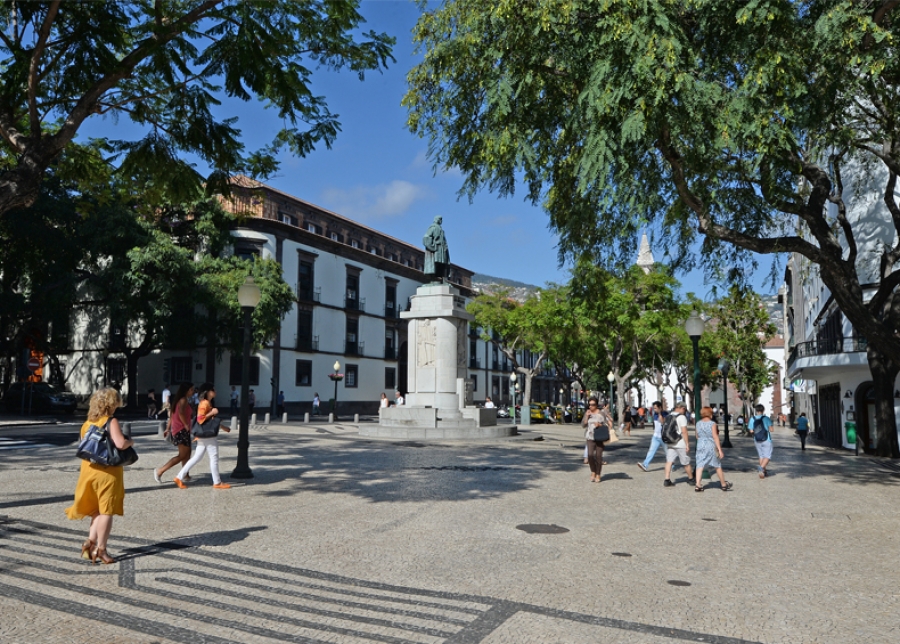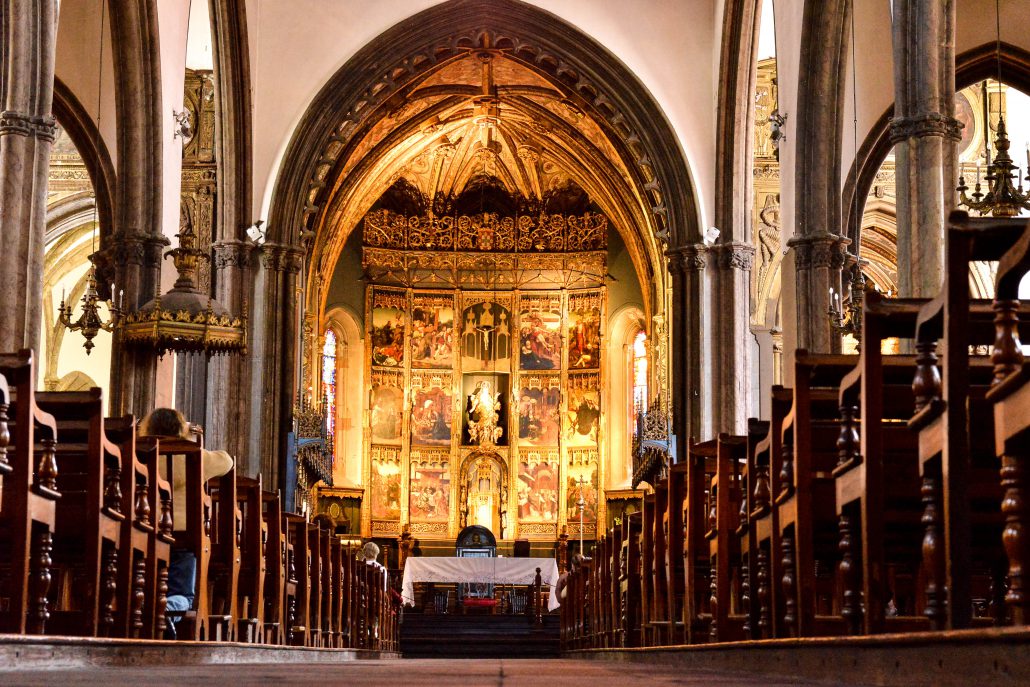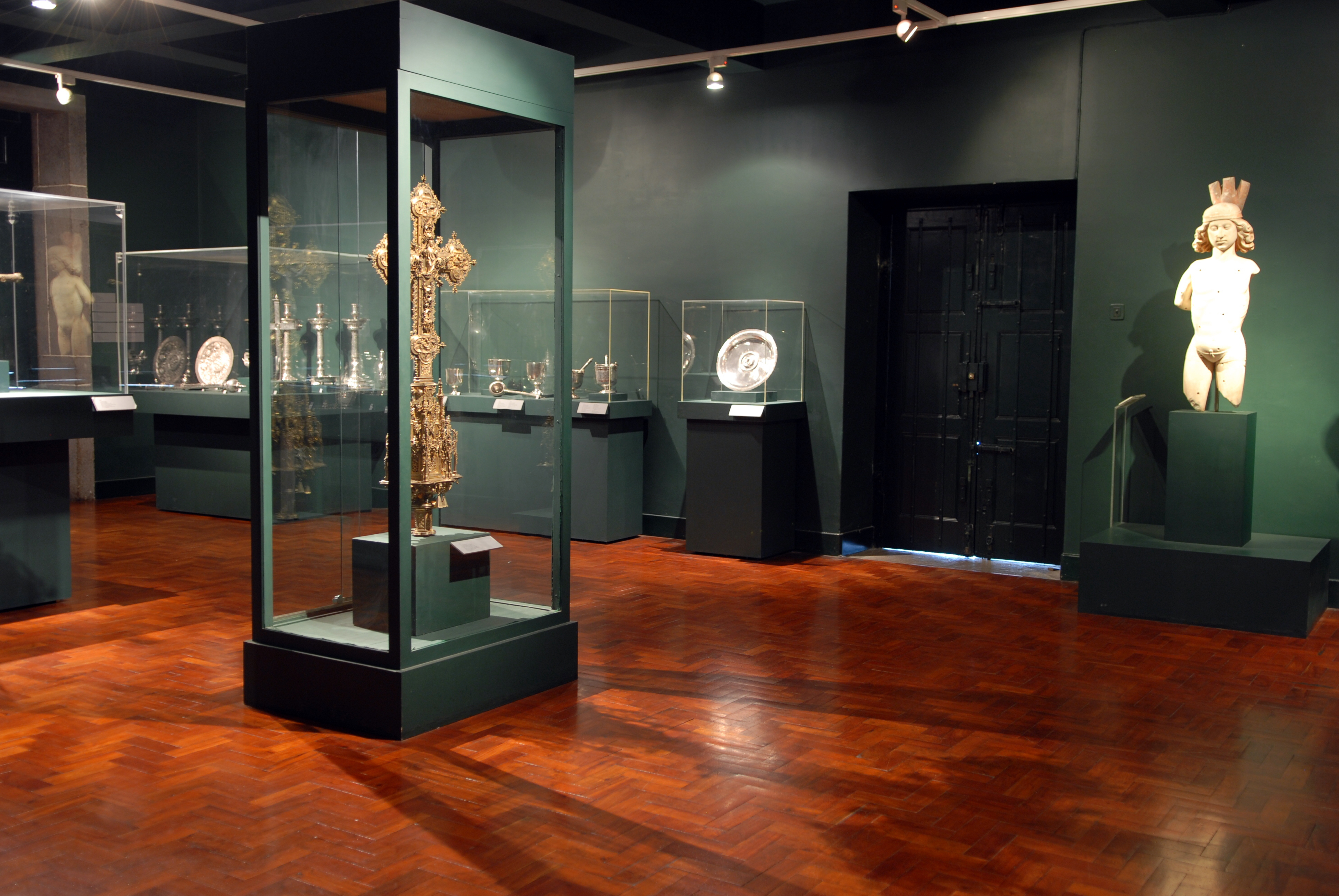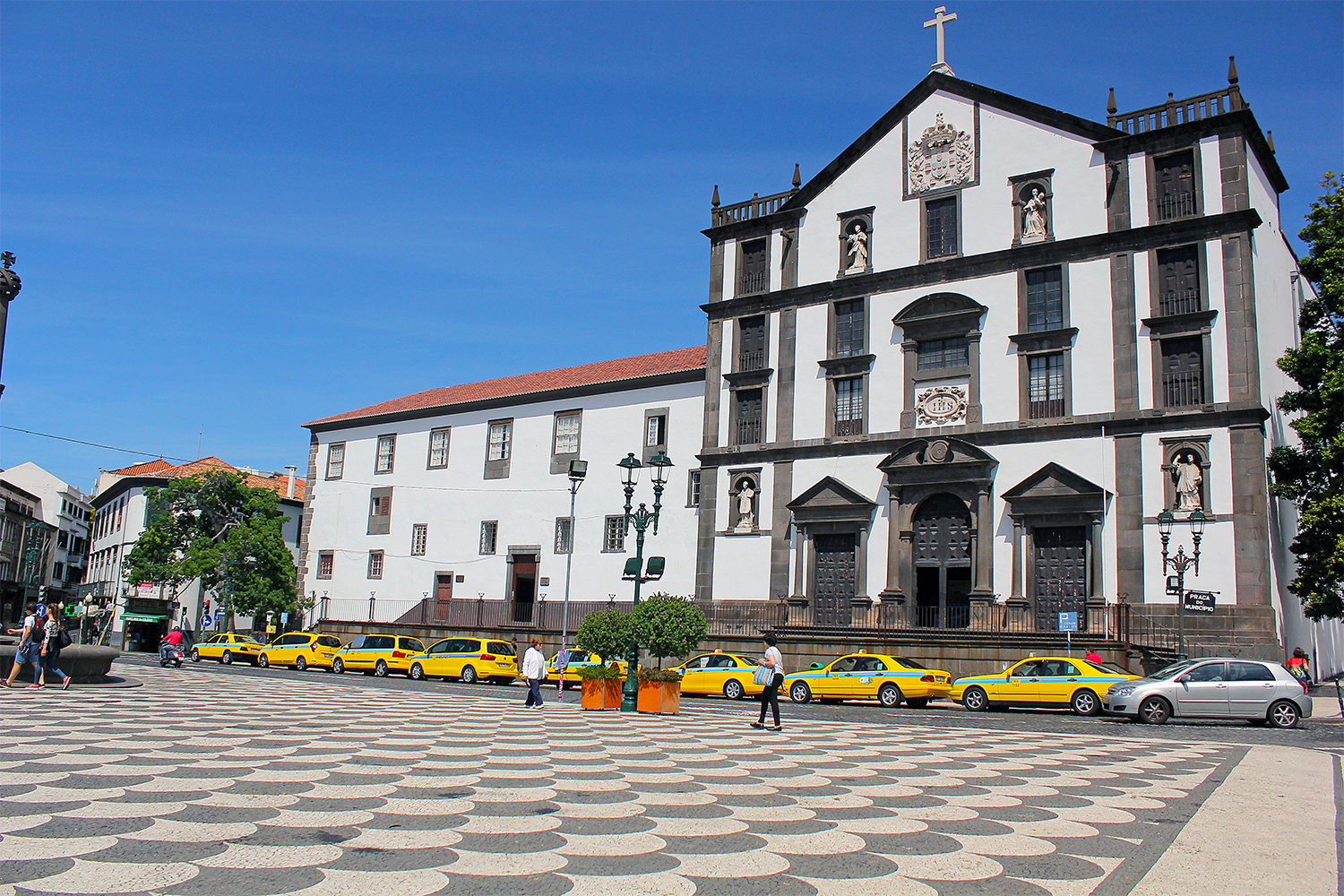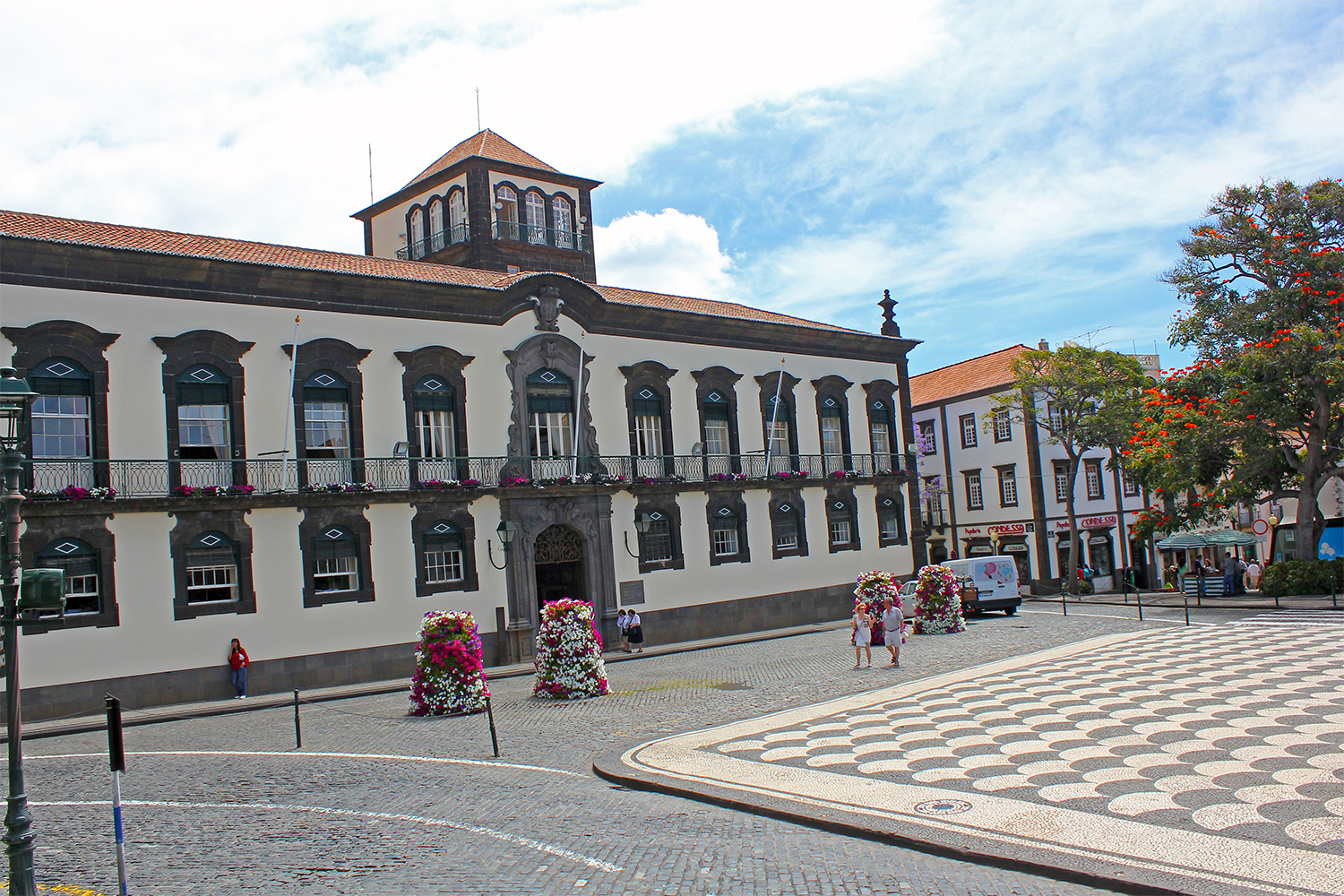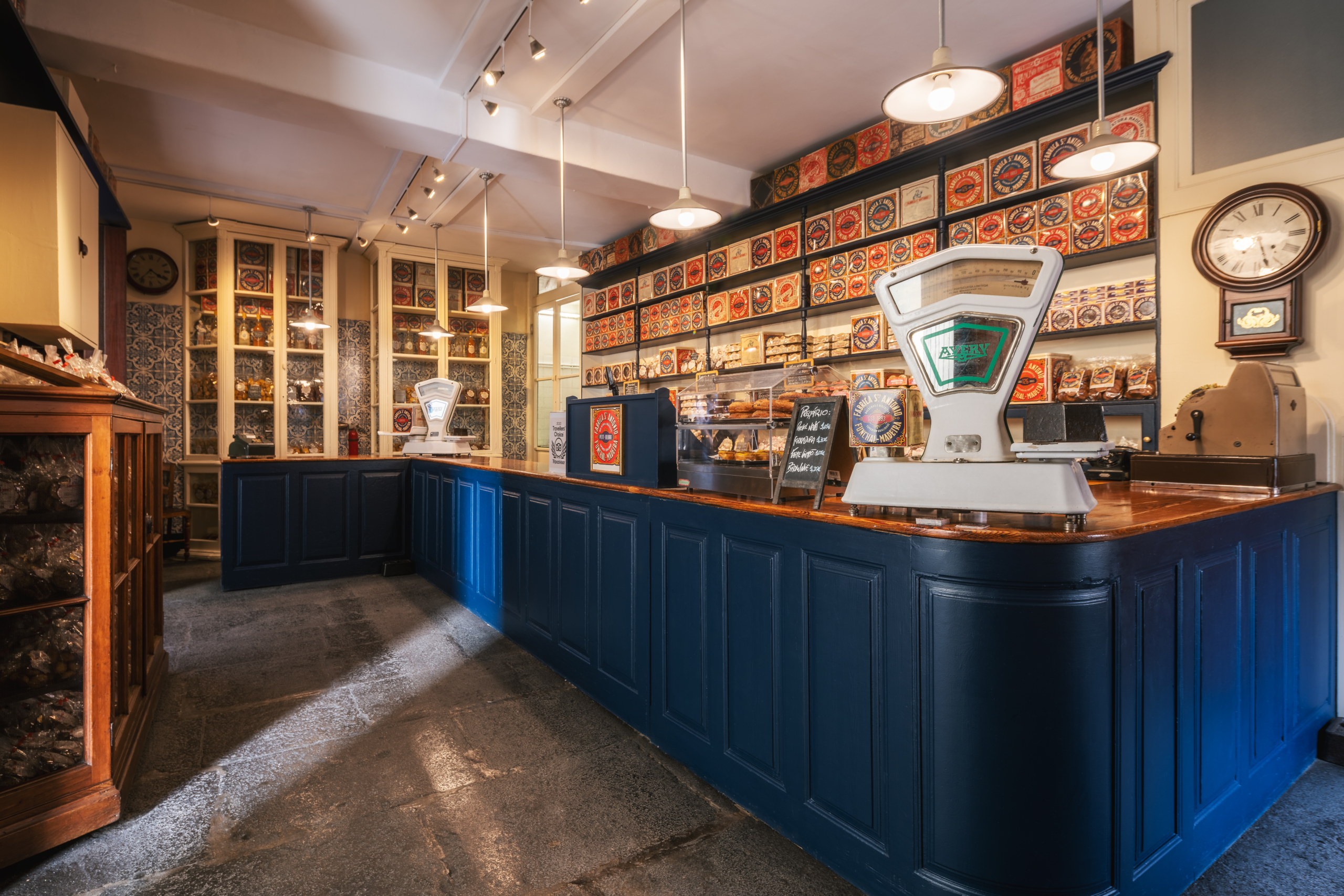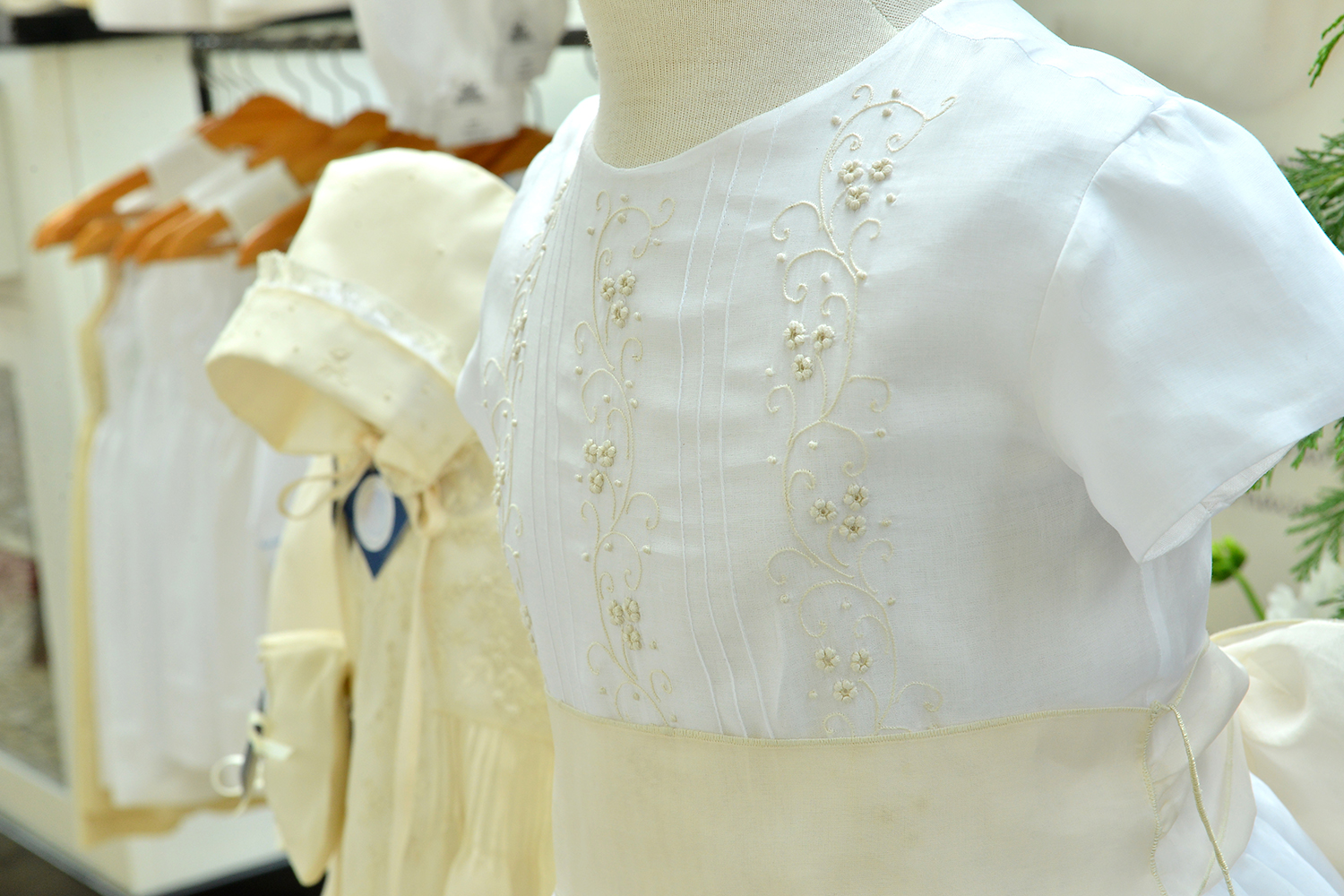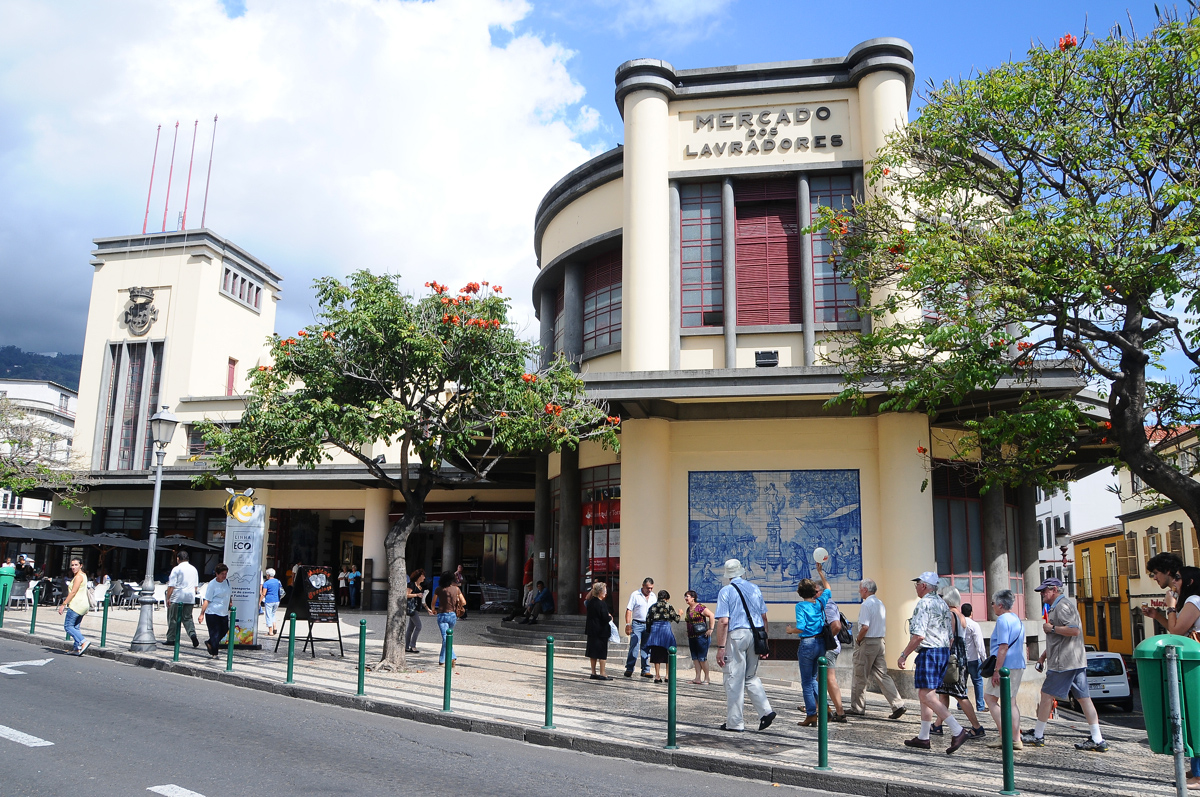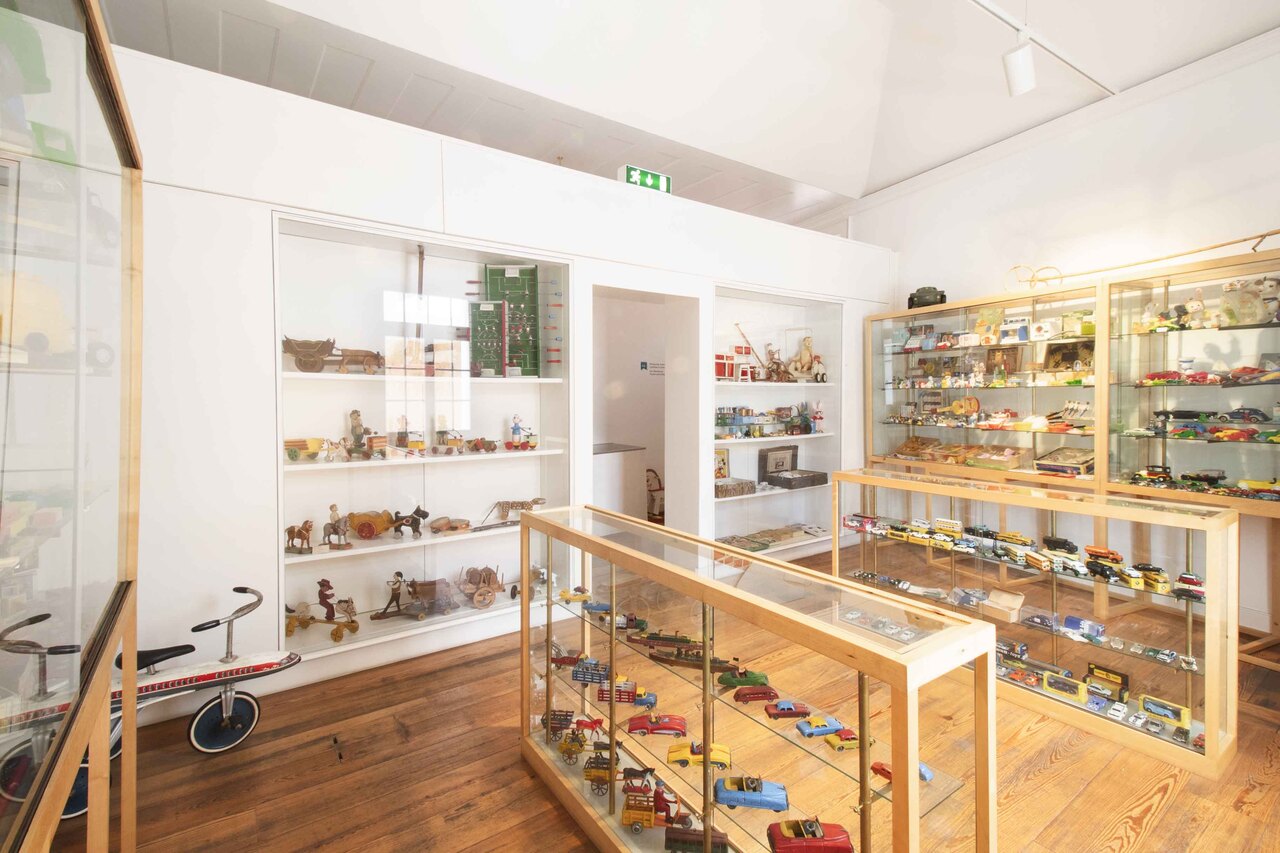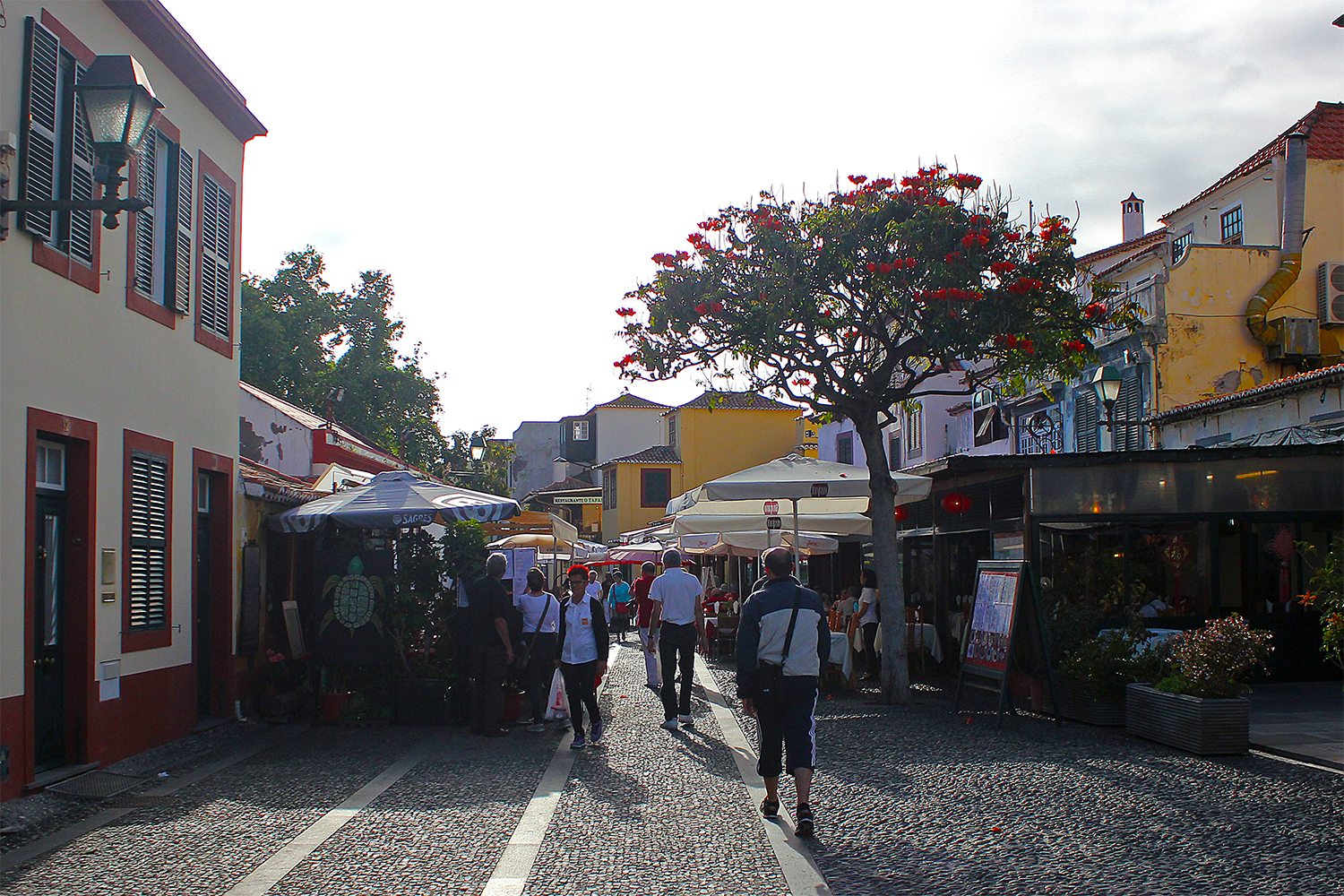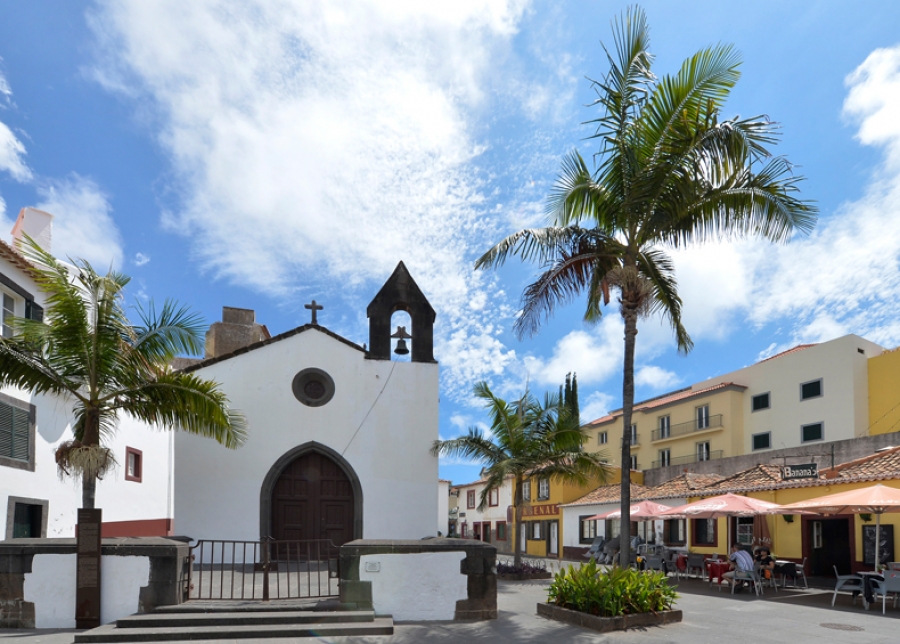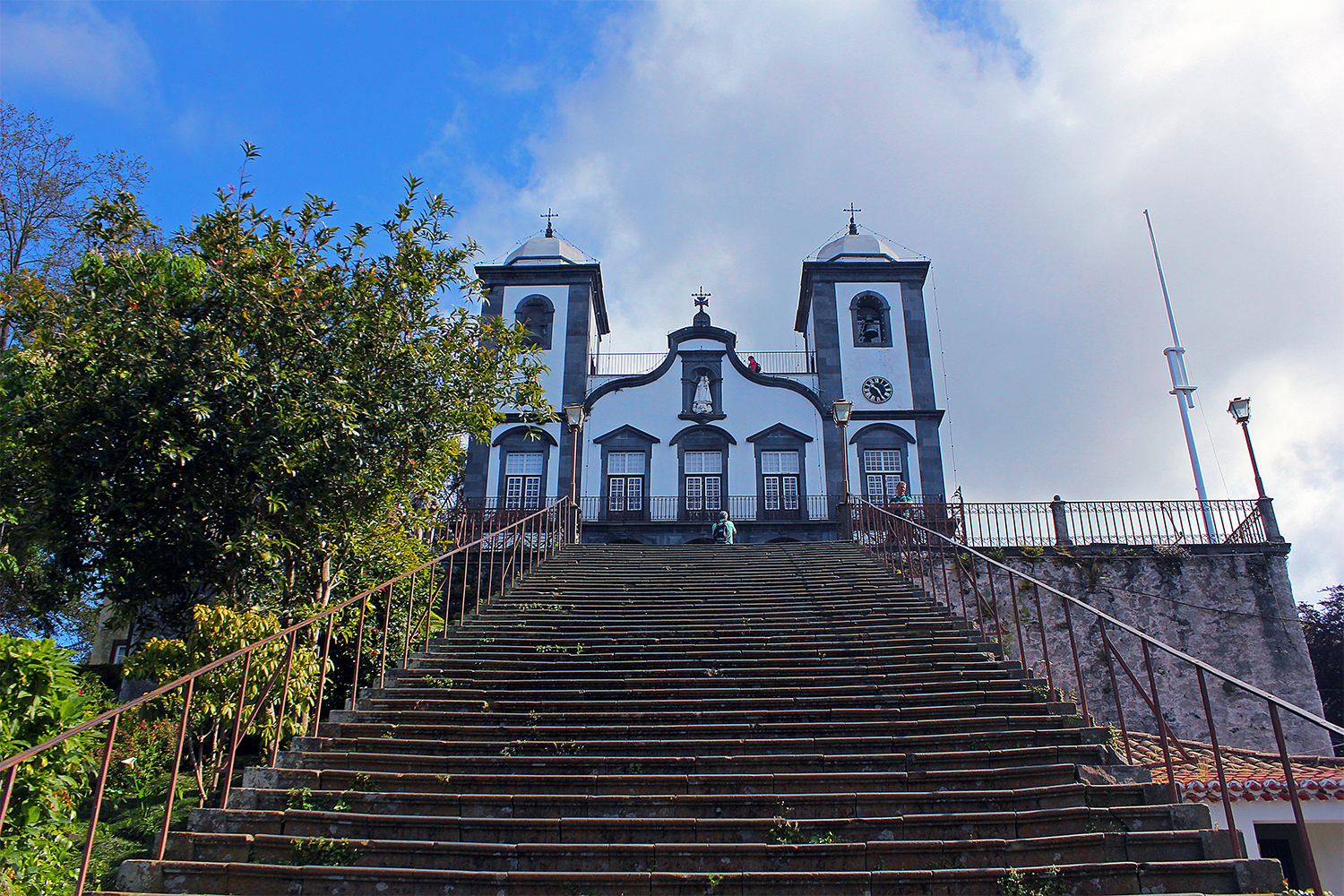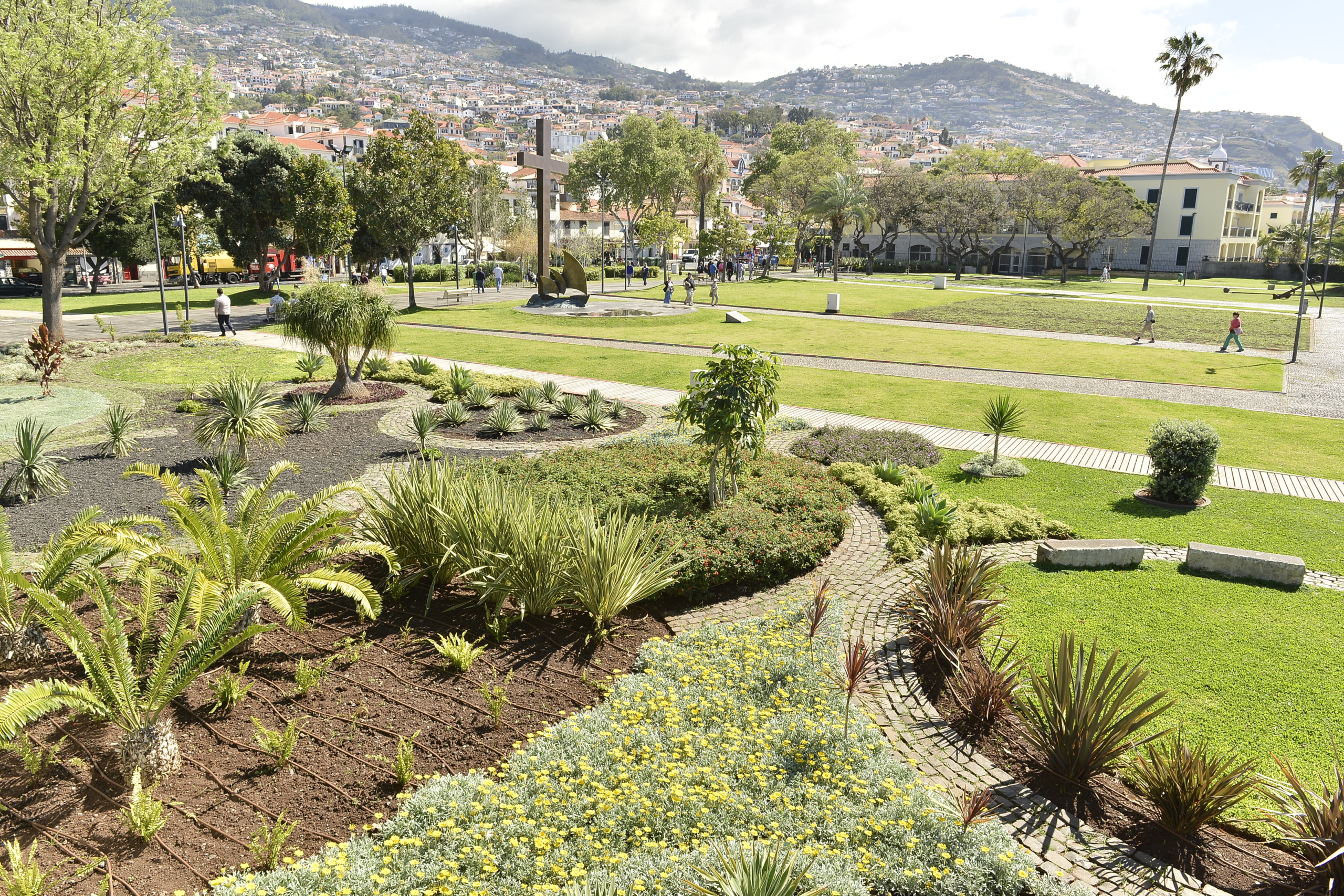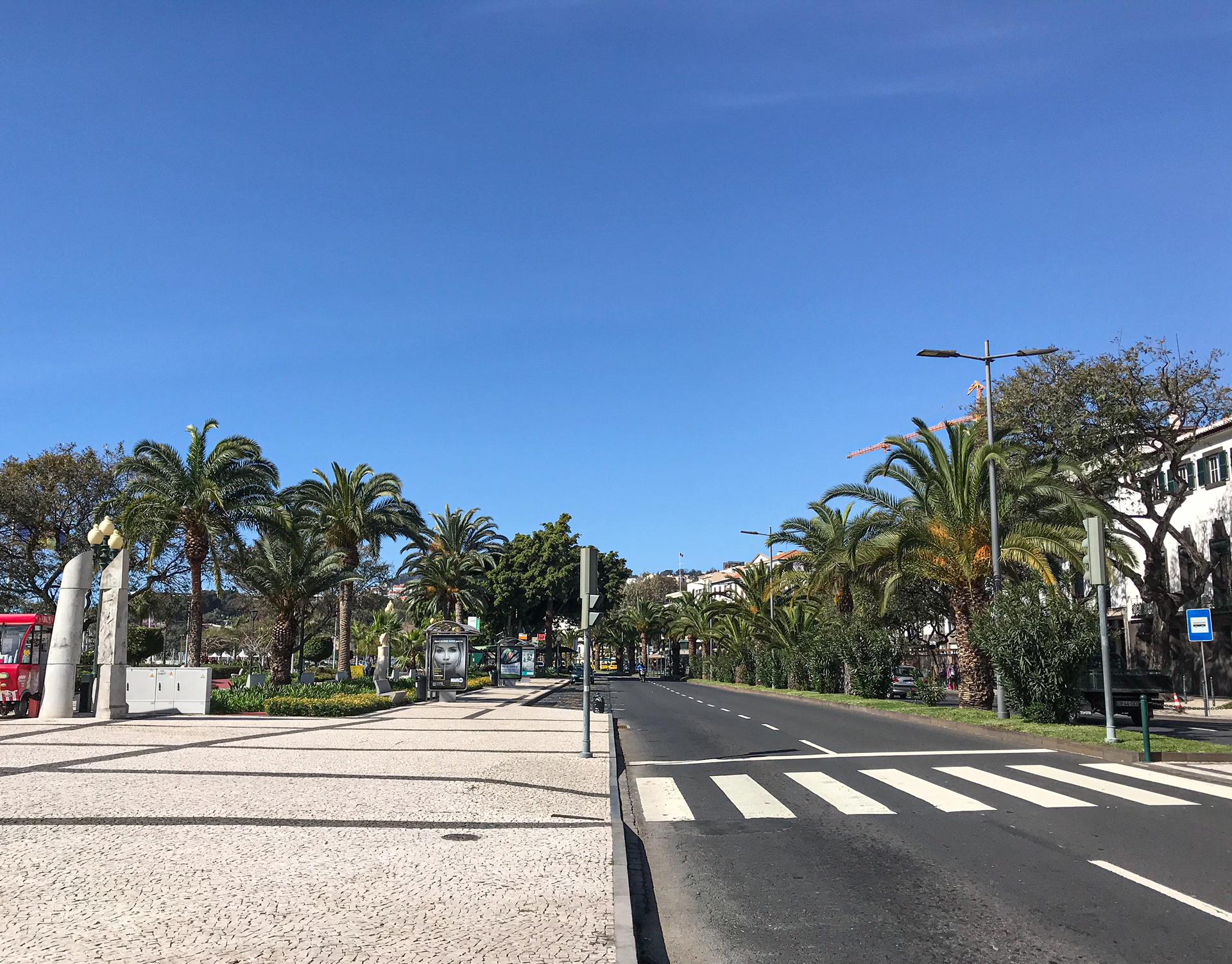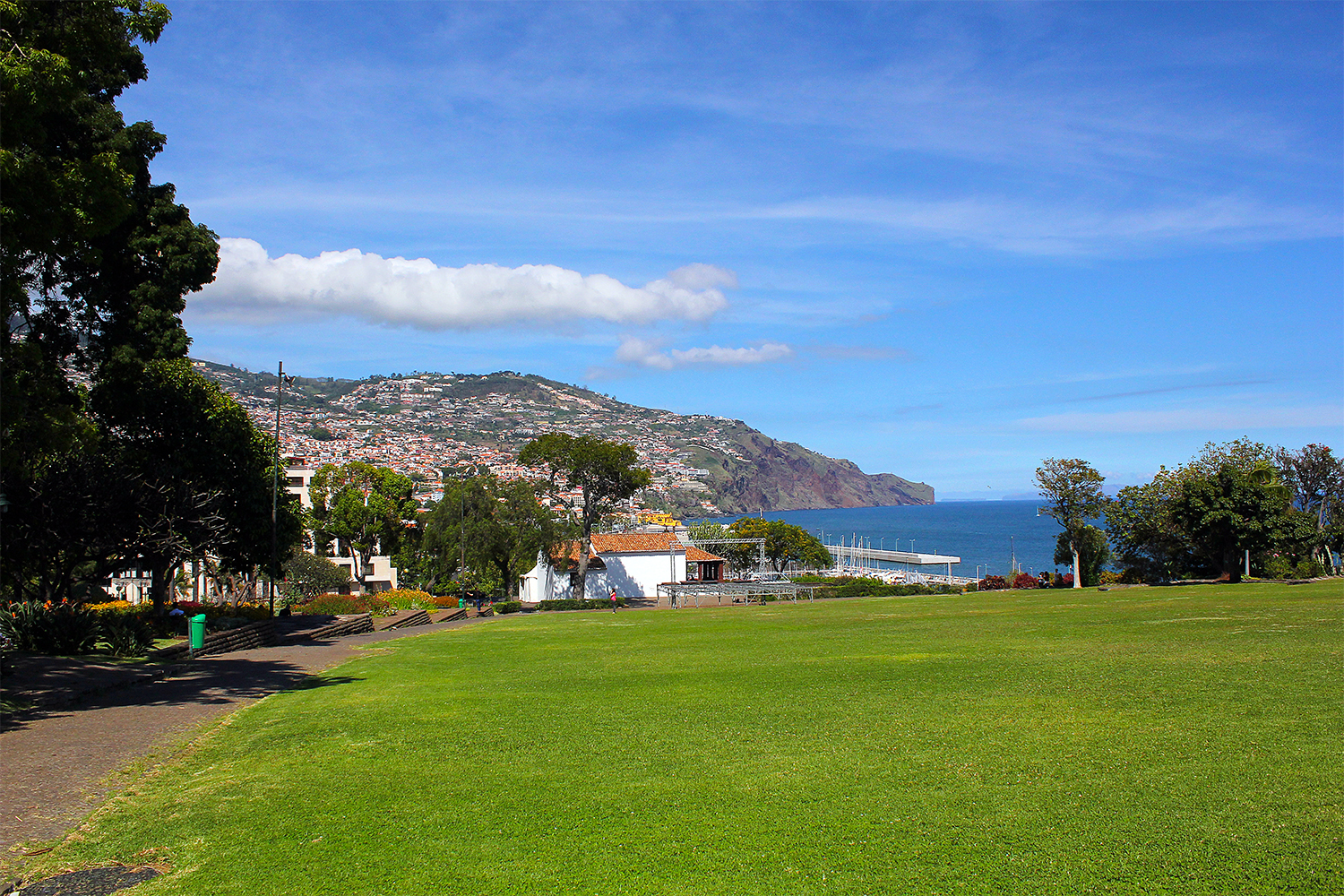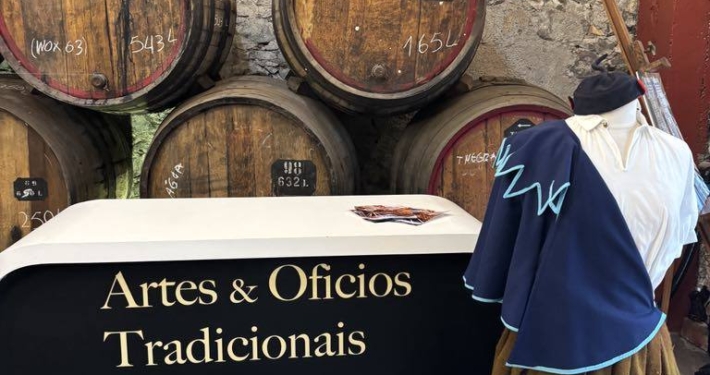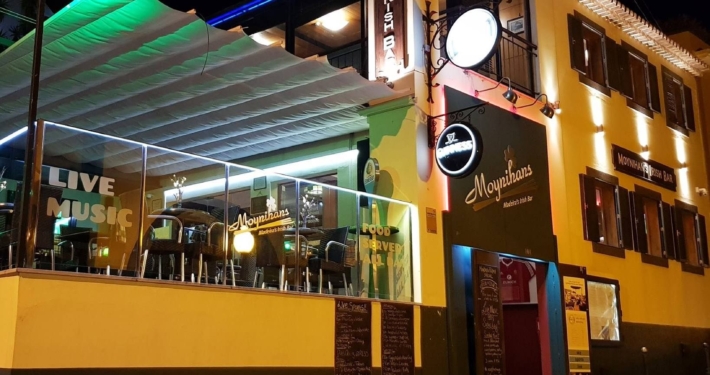Funchal Essentials
When strolling through Funchal, you will get to know its history and the stories of its people, from the early days of the sugar trade to the more recent past. Walk through the streets of a city that is over 500 years old. A unique cosmopolitan vein, marked by experiences, colours and aromas, in a tremendous diversity. Marvel at how much it offers you. Welcome to the capital of the Best Island Destination in the World!
1st Day
Teatro Baltazar Dias (Baltazar Dias Theatre)
1 – Baltazar Dias Municipal Theatre
Start the visit with this unique and emblematic space on Avenida Arriaga, in the city’s heart. Inaugurated on 11 March 1888, the building has the same lines as the Teatro Nacional de S. Carlos, in Lisbon, the model for almost all Portuguese theatres built during the 19th century. It was first called the D. Maria Pia Theatre, in honour of the then Italian queen of Portugal, and after 1930 it was renamed Baltazar Dias, after the Madeiran scriptwriter of the 16th century.
Besides eclectic and unique programming, in the Theatre’s context operates a pleasant café, much in demand by locals and tourists.
Jardim Municipal (Municipal Garden)
2 – Municipal Garden
As you leave the theatre, do not miss a visit to the Municipal Garden. With a privileged location in the city centre, the garden is undoubtedly one of the green spaces best known, visited and used by tourists and residents. Formerly known as the Dona Amélia Garden, it boasts unique biodiversity, with trees and plants from all over the world, from tropical Africa, India, Bangladesh, Malaysia, Mexico and Madagascar. Madeira’s flora is also represented in a unique journey to the four corners of the world.
For several centuries, the Convent of São Francisco was in this area and it has preserved a coat of arms with the Franciscan and Portuguese on one of the garden’s paths.
This garden also has an auditorium and amphitheatre, an esplanade, a kiosk and a small lake.
Avenida Arriaga
Percorra agora a 3- Avenida Arriaga, no sentido da Sé do Funchal. Parte desta avenida era, na segunda metade do século XV, um terreno de canaviais conhecido por Campo do Duque, do qual uma parte foi doada ao concelho do Funchal em 1485 para construção de uma igreja (a Sé Catedral), uma praça e a Casa do Concelho.
Blandy´s Wine Lodge
Stop by 4 – Blandy’s Wine Lodge, one of the oldest Madeira wine lodges in Funchal, housed in a group of Baroque civil architecture buildings. It has a 17th-century winepress, as well as a variety of machinery from other eras, once used for storing, trading and exporting this world-famous wine. A must visit is the museum where letters from famous personalities and documents on the formation of the Madeira Wine Co. are exhibited, as well as books and utensils connected to the different stages of Madeira wine production. Another unmissable part of this experience is the tasting of this magnificent nectar.
João Gonçalves Statue
Before reaching the Cathedral, you will find the 5 – the statue of João Gonçalves Zarco, discoverer of Madeira, by sculptor Francisco Franco, inaugurated in 1934, which won a gold medal at the Seville Ibero-American Exposition in 1929.
Sé do Funchal
6 – Funchal Cathedral
This must-see has one of the most beautiful wooden ceilings in Portugal. Built-in 1514, it has a unique architectural beauty. The chancel chair, based on the Flemish style, the main door with gothic lines and the gilded woodcarvings from the 17th century are some features of the Manueline period.
Go up Rua João Tavira and experience the typical shopping streets (Rua da Queimada de Baixo, Rua da Queimada de Cima and Rua do Bispo), where the tradition of some shops and street sales meets modernity. In Rua da Queimada de Baixo, enjoy the flavours of Madeira Island wrapped in the best handmade chocolate in the UAUCacau shop (find out about the chocolate workshops this shop offers).
Museum of Sacred Art,
Neste percurso, não deixe de visitar o 7 – Museu de Arte Sacra, instalado no antigo Paço Episcopal do Funchal (Rua do Bispo). Com dois núcleos distintos, neste museu poderá encontrar um grande espólio de Arte Flamenga, devido ao comércio de açúcar entre a Madeira e a Flandres nos finais do século XV, bem como de Arte Portuguesa.
Praça do Município / Igreja do Colégio dos Jesuítas
Chegado à 8 – Praça do Município, é fundamental uma visita à 9 – “ Igreja do Colégio dos Jesuítas (Igreja de São João Evangelista), de estilo maneirista, do século XVII. Apresenta um esquema arquitetónico levado a cabo pelos missionários Jesuítas que expandiram a Palavra de Cristo pelo mundo. No seu interior encontramos várias pinturas com molduras de talha dourada e as paredes da sacristia apresentam-se forradas a azulejos azuis e branco, do século XVII. A visita pode ser acompanhada por audioguias em diversas línguas, disponibilizados no local, onde recomendamos a subida à torre, que lhe oferece uma vista única num percurso histórico até ao cimo.
Paços do Concelho
Ainda na Praça do Município, uma visita aos 10 – Paços do Concelho (edifício da Câmara Municipal) é fundamental. Após passagem por várias instalações, ao longo dos tempos, a Câmara Municipal do Funchal transitou, na primeira metade do século XIX, para o atual edifício, mandado construir em 1758, pelo Conde de Carvalhal. Em 1940 o edifício e o espaço envolvente foram sujeitos a importantes obras que lhe concederam o aspeto atual. No interior é possível visitar os diversos salões da Ala Nobre e o pátio interior, terminando a visita com uma vista panorâmica única, na Torre do edifício.
Gaudeamus (Academic Association of Madeira University) / Adega D`Oliveira´s
We suggest you visit shop 11 – Gaudeamus (from the Academic Association of the University of Madeira) and the 12 – Adega D`Oliveira’s, where you can take a break, tasting a magnificent Madeira wine (both near the Church of the Jesuit College). Go up Rua dos Ferreiros and do not miss the Livraria Esperança, Funchal’s first exclusive book shop dating back to 1886. It has over 96,000 different books on display, many of which are out of print in Portugal and Brazil. It is the biggest bookshop in the country and one of the biggest in the world. On your way out, go down Rua dos Ferreiros and visit the Salão Londrino, a typical hat shop dating from 1937.
Continue down towards Largo do Chafariz, but be sure to stop off at Fábrica de Santo António (on Travessa do Forno), which has been producing the traditional honey cake for over 120 years and is the home of biscuits for tourists and locals alike. Delight yourself with the aromas and flavours. Next, to Largo do Chafariz, there you will find the traditional street sales and the typical florists. Turn left, towards Rua Dr Fernão de Ornelas, one of the most important arteries of the city centre, with lively commerce and a diversified offer.
Bordado Madeira, a Bordal / Patrício & Gouveia
Walk down the street, and stop at the shop and factory of 13 – Bordado Madeira. You will find a typical embroiderer at the entrance. Do not forget to visit the factory and shop 14 – Patrício & Gouveia, with embroidery and tapestries, as well as a variety of regional and typically Portuguese products, on Rua Visconde Anadia.
Farmer’s Market
Chegado ao 15 – Mercado dos Lavradores, deslumbre-se com os melhores produtos da Madeira, numa simbiose perfeita de cores e aromas com a genuinidade das suas gentes. O edifício data de 1940 e é testemunho da arquitetura do Estado Novo. A fachada, a porta principal e a praça do peixe são ornamentadas grandes painéis de azulejos da Fábrica Maria de Portugal. Vale a pena passar aqui algum tempo e pode aproveitar uma pausa para degustar algumas das melhores frutas e produtos frescos da Madeira ou um simples café na esplanada do último piso.
A envolvente ao Mercado dos Lavradores possui uma vida ímpar, representativa do quotidiano funchalense, com um comércio vivo e típico, onde abundam as tradicionais vendas (mercearias e tabernas), as quais são um bom exemplo A Mercadora, na Rua do Hospital Velho e o Restaurante O Jacquet, no início da Rua de Santa Maria.
Old Town/ Toy Museum
Saindo na Praça do Peixe, nas traseiras do Mercado, dessa a Rua da Boa Viagem em direção à 16 – Zona Velha da cidade (via Rua de Santa Maria). Não deixe de recordar a sua infância e visite também magnífico espólio do 17 – Museu do Brinquedo e espaço do Armazém do Mercado, na Rua Latino Coelho.
2nd Day
Zona Velha (Old Town)
18 – Zona Velha
With its narrow cobbled streets and old house facades, this is a historic area of great architectural and heritage value, where you can find some traditional restaurants integrated in old fishermen’s houses and other residences from the 18th century. Its streets and courtyards are welcoming and, according to history, the first settlement of the city was born here. It is here that the largest offer of bars and nightlife is concentrated. With its doors painted by local and foreign artists, it represents one of the facets of the city’s culture and urban art.
Santa Maria Street
Walking along Rua de Santa Maria, one of the oldest streets in the city, it is worth visiting the 19 – Fábrica das Botas de Vilão, next to the 20 – Capela do Corpo Santo. Go straight on, towards 21 – Forte de São Tiago, a beautiful example of military architecture, which protected the island from the attacks of the corsairs that passed along the coast. If possible, on your way out, make sure you visit 22 – Igreja do Socorro, at the top of the street (take the Travessa do Forte). Take the opportunity to enjoy the magnificent view from the terrace of Barreirinha Bar Café.
Head back towards 23 – Jardim do Almirante Reis (next to the cable car), via Rua D. Carlos I.
Monte
The Cable Car experience will take you to Monte in approximately 15 minutes. It is a unique experience. The 34 – Monte is one of the most pleasant places in Funchal. It is where you can visit the beautiful and exuberant 35 – Tropical Garden and Monte Palace Museum. This garden has one of the most important tile collections in Portugal, in a unique environment that includes valuable specimens of Koi fish, swans and peacocks that inhabit this botanical paradise, as well as a museum. It has The 36 – Church of Nossa Senhora do Monte, patron saint of Madeira, the 37 – Quinta Jardins do Imperador (Emperor’s Gardens Manor), the last residence of Emperor Charles of Austria after his exile in 1921 or, still, the 38 – Municipal Park. Enjoy the view from the belvederes.
The return to Funchal can be done again by cable car or on the famous 39 – Wicker Sledgers to Livramento (you can use one of the many public transports available in the area). You can also choose to return on the 40 – Botanical Garden Cable Car, departing from Largo das Babosas, which will take you to the 41 – Botanical Garden, where you can see over 2000 plants with their respective identifications, with harmonious shapes and contrasting colours. Madeira has extraordinary endemic flora and benefits from optimal conditions for the development of plants from almost all over the world (Inquire in both cable cars about the various combined tickets available).
Centre
If you return by cable car to the Almirante Reis Garden, at the end of the cable car you will find the 24 – Electricity Museum, installed in the space where the old thermal power station used to be. Commonly known as “Casa da Luz”, it displays a set of documents and machinery through which you can observe the evolution of electricity installation in Madeira Island. Cross the João Gomes Stream, where you will find the ruins of the old fortified city wall, and continue towards Rua da Alfândega, via Rampa do Cidrão (you will find, on your right, Rua dos Tanoeiros, one of the most typical streets of the city with lively commerce. Don’t miss the 150-year-old grocer’s, famous for selling spices), heading to 25 – A Cidade do Açúcar Museum (Sugar of City Museum), in the space where the Manueline house of João Esmeraldo, a Flemishman who settled in Madeira in the late 15th century to produce and trade sugar, used to stand. Archeological excavations in 1989 (at the museum) uncovered a rich and numerous collection of testimonies of daily life between the 16th and 17th centuries, which originated this museum featuring a Sugar Loaf, Sugar Forms, Flemish paintings and sculptures.
After leaving the Museum, walk down towards Largo dos Varadouros (at the end of the 16th century, it was of almost vital importance to the city and in the 17th and 18th centuries it was the city’s commercial centre and its entrance gate). There you will find the 26 – Porta da Cidade (City Doors), a replacement of the old City Entrance, which enclosed Funchal’s defensive wall. Built-in 1689 by the then Governor D. Lourenço de Almada, it was demolished in 1911.
3rd Day
Avenida do Mar
Start the day at Avenida do Mar and walk along with it, enjoying the magnificent seafront and the cosmopolitan atmosphere, with its terraces along the Marina. On the right-hand side of this promenade, you will find the 27 – Regional Legislative Assembly building, housed in the old Customs House of Funchal, which was built around 1519 and underwent various alterations during the 17th and 18th centuries. A little further on, do not miss a visit to the 28 – Palácio de São Lourenço, a National Monument since 1943, and the Military Museum.
Santa Catarina Park
Aprecie a baía do Funchal no 29 – Miradouro do Parque de Santa Catarina, com uma magnífica vista sobre a cidade e a baía. Pode passear pelo parque observando as inúmeras espécies arbóreas provenientes de todos os cantos do Mundo e desfrutar da esplanada, do parque infantil e dos seus amplos relvados.
Destaque para a 30 – Capela de Santa Catarina, mandada erigir em 1425, em madeira, por Dona Constança, esposa do descobridor João Gonçalves Zarco. A capela atual é uma construção dos finais do séc. XVII. Bem próximo do Parque, na Avenida do Infante, encontrará a 31 – Quinta Vigia, residência oficial do Presidente do Governo Regional da Madeira, onde pode visitar os jardins e a Capela das Angústias, além de um magnífico miradouro com vista sobre a baía (encerra sábado e domingo).
Praça do Mar
Walk towards the port and do not miss a visit to the 33 – Design Centre Nini Andrade Silva, located in the emblematic building of Fortaleza da Nossa Senhora da Conceição, which was once the home of Gonçalves Zarco. With a stunning view over the entire bay of Funchal, the space documents the Madeiran designer’s career and work and features a permanent exhibition, which is part of Nini Andrade Silva’s private collection, where the history and culture of Madeira and its strong connection to the history of the sea are visible. The Nini Andrade Silva Design Centre is a meeting and sharing place endowed with unique services and space valences, such as a permanent exhibition area, shop, restaurant service and a restaurant.
Besides documenting the designer’s career and work, the Design Centre intends, actively and dynamically, to become a hub and laboratory of ideas, as well as a centre for development and innovation, where all artistic expressions and thoughts can be found in this place. The place that was once the home of Gonçalves Zarco, a former Portuguese navigator and colonizer of the Madeira Archipelago.
The existing permanent exhibition, which is part of the private collection of Nini Andrade Silva, is at the origin of the creation of the Design Centre, a project whose exhibition discourse allows explaining, in an unprecedented way, the history and culture of Madeira and its strong connection to the history of the sea.

